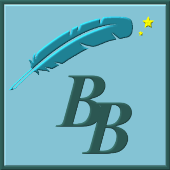This is the 15th of an 18 part series on How to be a DM. To start at the beginning, click here.
 Once combat starts, I try to keep the flow fast and furious. Keep in mind that in an RPG, one round of combat may represent 6 seconds of time in your universe.
Once combat starts, I try to keep the flow fast and furious. Keep in mind that in an RPG, one round of combat may represent 6 seconds of time in your universe.
Let that sink in. If the whole battle lasts 10 rounds, that is only one minute.
In real life, you want to keep combat moving quickly. In 4e, a combat encounter could last over an hour in real life. That one encounter could chew up a good chunk of your game day. Luckily, combat is faster is 5e and other systems.
Actions During Combat
When combat begins, each character can usually do several actions. It varies greatly by the core rules you are using, but in general you can move and take an action. A move consists of walking or running a certain distance as defined on the character sheet. Some rules allow you to split a move into two segments with an action in the middle. The distance you can move is also affected by the terrain and the location of other characters.
An action may consist of attacking another character, casting a spell, or doing another move. You usually can do some free or bonus actions as well, such as yelling for help or opening a door.
Hitting an Opponent
To see if an action is successful, the player rolls a die and compares that that number with those of the opponent. If the attack is successful, the opponent is hit and damage is done. Additional dice rolls determine the amount.
This damage is taken off of the “hit points” of the opponent under attack to see if it’s dead yet or suffers some condition. Play then continues to the next player in initiative order.
 If an opponent is killed, we replace the mini with a red token to indicate that area is now difficult terrain. I made the tokens out of heavy washers with red construction paper glued on and varnished. It seems that everyone at the table is eager to be the one to replace a mini with a dead token.
If an opponent is killed, we replace the mini with a red token to indicate that area is now difficult terrain. I made the tokens out of heavy washers with red construction paper glued on and varnished. It seems that everyone at the table is eager to be the one to replace a mini with a dead token.
Because of the complexity of keeping track of everything, I generally have a “trust but verify” policy. I don’t watch the character’s rolls or check anyone’s math. Everyone is here for fun. I can ask for an explanation of a total but I generally don’t. If you feel you can’t trust the players to play honestly, get a new game group.
Recording HP
We use small poker chips to record the current HP total for each PC. When someone is hit, they drop some chips in their cup. Each person has their own color for clarity. That way everyone around the table can see when their teammates are running low on health.
 Some magic users prefer to indicate the range of their spells using bent pipe cleaners. For some feats or spells, characters “mark” a particular opponent and receive bonuses against that monster. These players like to indicate the monster they have marked with small plastic or metal rings for reference.
Some magic users prefer to indicate the range of their spells using bent pipe cleaners. For some feats or spells, characters “mark” a particular opponent and receive bonuses against that monster. These players like to indicate the monster they have marked with small plastic or metal rings for reference.
Keep in mind that although each player is tracking their PC and maybe a companion animal, as the DM you are charge of many more characters. You act as the opponents as well as any NPCs that are traveling with the PCs.
I have some other tricks to track the opponents and their miniatures. In the next story, I’ll explain how to be organized during combat so you don’t have to ask Wait, which orc did you just attack?
Bitzy the Bard
“Life is an adventure story and you are the star. Choose to play a hero!”


